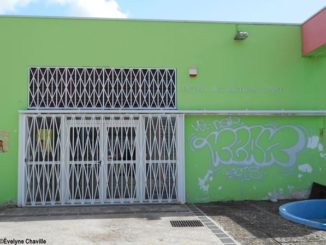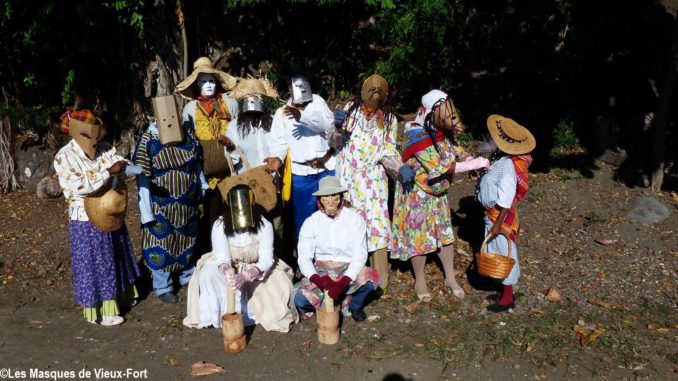
“Mas Vyéfò” (en creole) or “Les Masques de Vieux-Fort” (The Masks of Vieux- Fort) will go to Montserrat on March 17 during the St. Patrick’s Day Festival celebrations organized from March 9 to 19. For years, ties of friendship have been developed between this small town of South Basse-Terre and the Montserratians, this will be the fifth time that the association will visit them. It must be said that “Mas Vyéfo” represent a real part of the local culture, often overlooked in Guadeloupe.
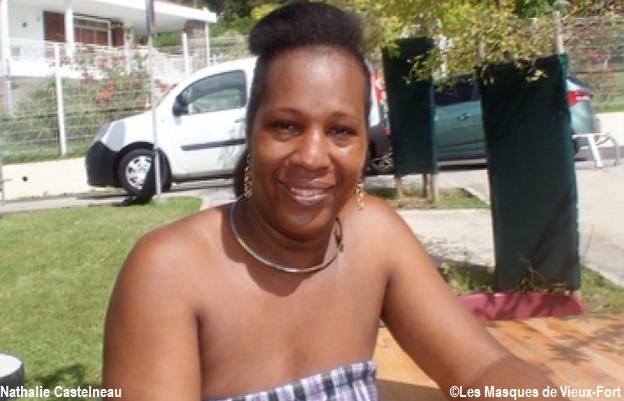
A delegation of 50 members of the association “Les Masques de Vieux-Fort” will go on a boat to Montserrat this Saturday, March 17 on the occasion of St. Patrick’s Day which is celebrated on the island because of the Irish roots of part of the population. They will play their music in front of the crowd. It is always with pleasure that the Montserratians welcome the inhabitants of Vieux-Fort because, during the four previous stays, they had the opportunity to discover the richness of their carnival heritage.
Indeed, when we see the “Mas Vyéfò” with their almost “soft” music and their clothes in Madras fabric, we are tempted to equate them with mere folklore. But when we inquire about their creation, quickly we go back into the Guadeloupe of yesteryear. So, we learn that the masks and carnival in the town of Vieux-Fort date back over 150 years and, above all, they are surrounded by strict rules. The new generation which decided to breathe life into this heritage, a decade ago, made a real research work to collect information, in particular from elders, so that this know-how and these rules are applied.
During slavery, colorful clothes were forbidden, the slave could not get dressed as he wanted and he had to be identified during authorized movements. At the time of liberation, as a mockery of history and former slave owners, appeared this carnival costume with very bright colors and this mask that completely hides the face making impossible all identification.
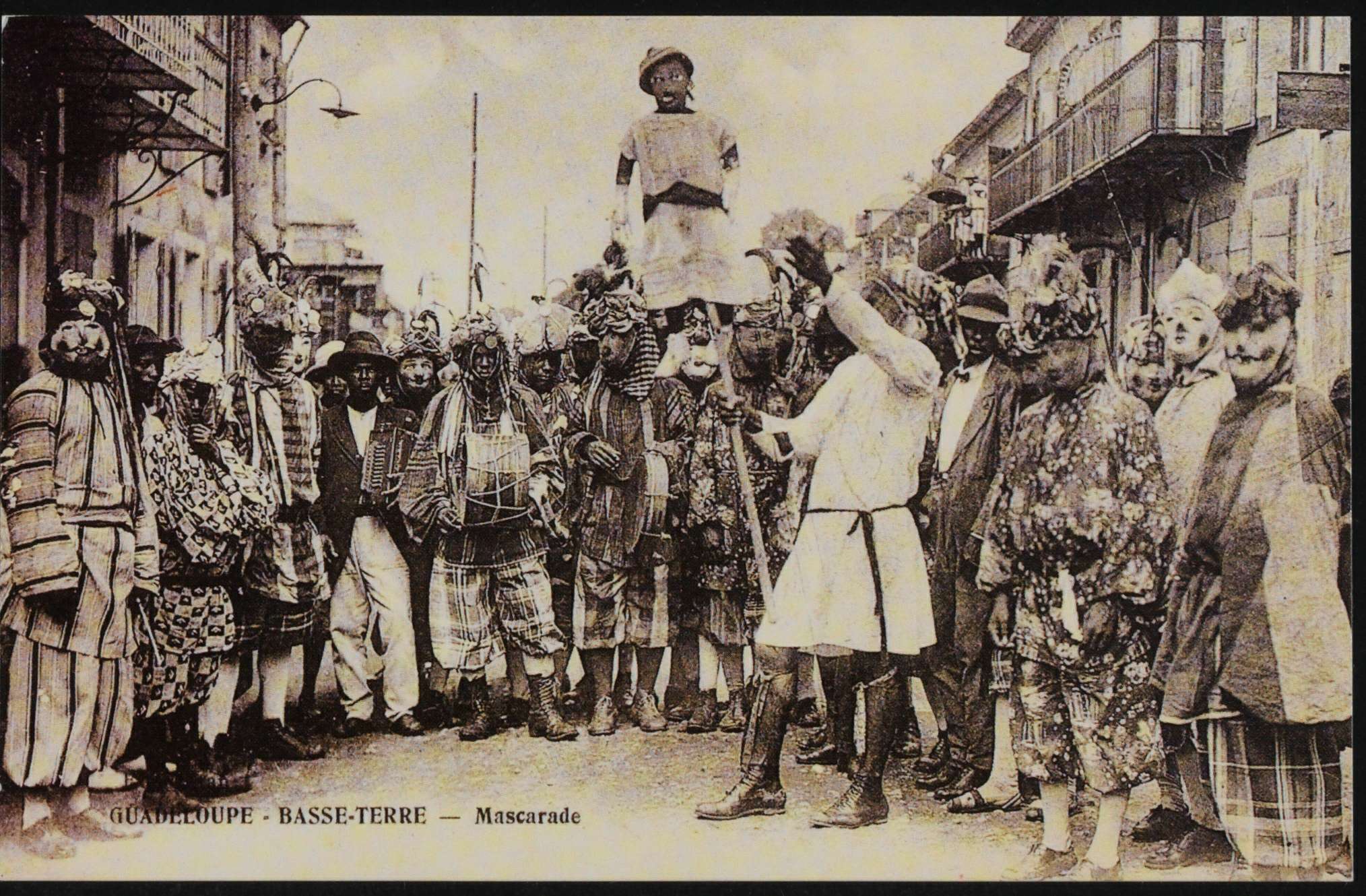
Masks and a carnival in Vieux-Fort for over 150 years
Since 2011, Nathalie Castelneau is the president of the association “Les Masques de Vieux-Fort“, commonly called “Mas Vyéfò” in Creole. She is very passionate about the subject, she could talk about it for hours… “People have the impression of having always seen the Masks of Vieux-Fort because they made their appearance on the island some ten years after the abolition of slavery in 1848, when the former slaves appropriated all Western festivals.There is a postcard dating back the 1900s that represents the masks of Vieux-Fort in Basse-Terre but when “Mas Vyéfò” started to go to the city, on Lundi Gras, they were already established in the commune. All the other “Mas” arrived later”, she says.
We could have difficulty in believing it but Vieux-Fort always had its own carnival and its masks were worn at well defined periods. On the first Sunday in January – Epiphany day – the carnival lovers of the commune “made Congo” (it’s the term used); in this parade open to all, participants were covered with black syrup. The second Sunday was reserved for the “masque grajé mannyok” (grated manioc mask). The third Sunday was the day of the “masque pilé kafé” (crushed coffee mask). The costumes of these last two masks represented scenes of dayly life of workers: patched clothes, straw hat, bag worn across the shoulder (called zabrisak), a cloth on the head to carry the baskets, for example. On the fourth and last Sunday in January, carnival lovers came out with the “mas a tok” (mask with hat) which was called in Creole “bèl mas” (beautiful mask) with its 7 colors, 7 mirrors, 7 ribbons…
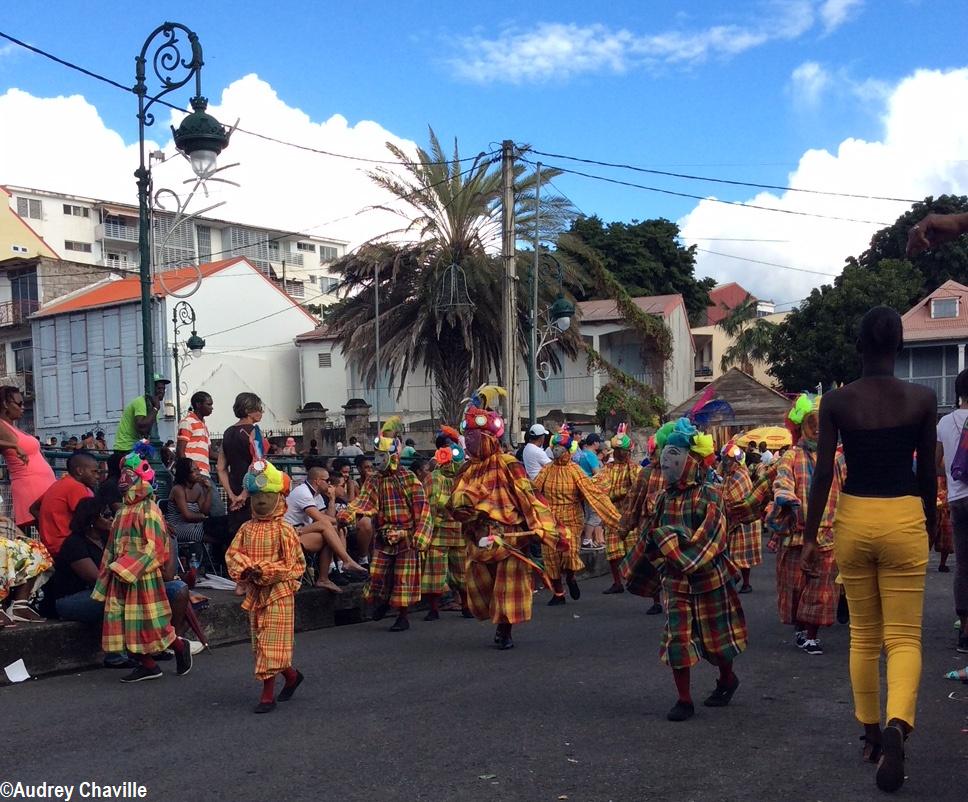
Respect for the rules set by the elders
The “mask with hat” was also worn on Dimanche Gras during the parade in Vieux-Fort because, that day, the “Mas Vyéfò” also stayed in their town. “This calendar has rules established by the elders that we respect, today.We accept invitations to parade in other communes or cities according to our carnival calendar in Vieux-Fort. In addition, often people ask us if we are not hot with our disguise but this is not the case. Contrary to what some people might believe, this mask is very airy and we do not feel hot with our costume”, says the president of the association.
Throughout its history, “Les Masques de Vieux-Fort” or “Mas Vyéfò” experienced difficult periods, especially during the two world wars. They almost disappeared during World War II, at the time of the stay in Guadeloupe of Governor Constant Sorin, from 1940 to 1943, the French representative of the Vichy authoritarian and totalitarian regime, a terrible time of restrictions, called here in creole “an tan Sorin” (at the time of Sorin). “In the beginning, women did not dress up and did not participate in parades but during the two world wars, men were absent, so they began to replace them”, she says.
Even if the “Mas Vyéfò” always existed, often without any administrative registration, to be in conformity with the law, the young generation created and registered this new association “Les Masques de Vieux-Fort” on December 30, 2008 but the popular name “Mas Vyéfò” remained.
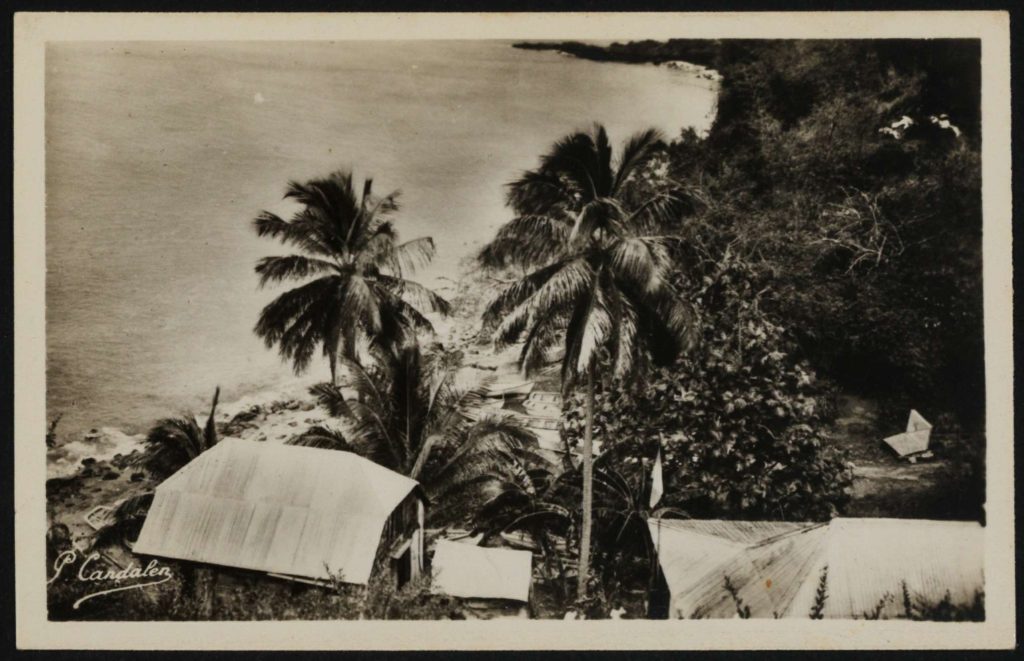
The importance of the “bik a mas”
Because of the isolation of Vieux-Fort, a town with cliffs, its inhabitants were practically self-sufficient that’s why this heritage was safeguarded. “At that time, it was easier for the population of Vieux-Fort to go to Dominica by boat (with a stop in Les Saintes, if necessary) than to go to Pointe-à-Pitre. From their part, the Dominicans came to Guadeloupe to sell their vegetables. The first masks with metal cloth and the first floral fabrics, then Madras fabrics for the costumes came from Dominica. Now, we buy our fabric in Guadeloupe and craftsmen in Vieux-Fort learned how to make the mask”, explains Nathalie Castelneau.
In the last century, to go to parade in Basse-Terre, the “Mas Vyéfò” made the trip also by boat. Today, sometimes the members of the association choose this mode of transport to go to participate in a parade in the capital.
Many other traditions surround “Les Masques de Vieux-Fort”. The person who wears a mask had to remain anonymous, he could not take off his mask in public and all carnival lovers had to take off their masks before sunset. “Today, we do not participate in night parades”, says Nathalie Castelneau. Moreover, the departure took place in the “bik a mas”, a secret place at Anse Dupuis where men met to disguise themselves. The wifes who prepared their husbands’ costumes were not able to recognize them during the parade because they had exchanged their trousers, shirts, shoes etc. Today, the departure always takes place at Anse Dupuis but without any secret…
The parade is always led by the “mèt a mas” (master of mas) who is, generally, an elder of the commune. He directs the musicians. He has a stick with which, before, he did not hesitate to beat those who did not follow the rules. The musicians must not change places in order not to distort the sound of music otherwise the “mèt a mas” who watches everything intervenes…
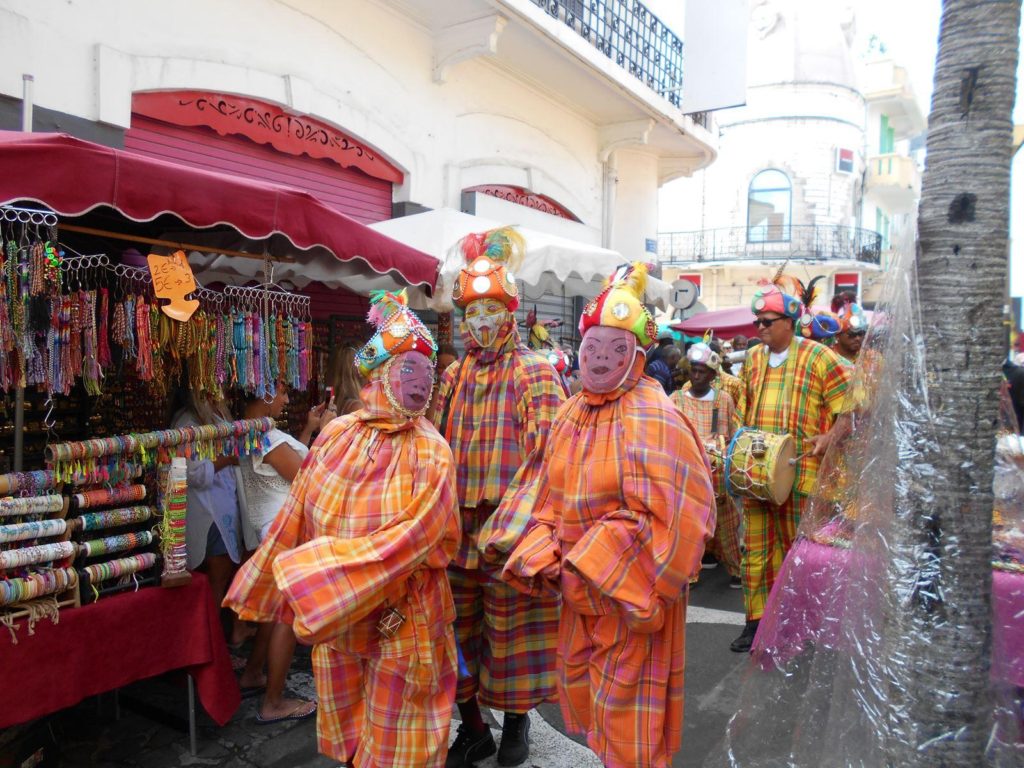
Transmission in Guadeloupe and Montserrat
There are two drums covered with goat skin: the “flat drum” and the “drum with two buttocks”, so called because you can bang on both sides with sticks. The big stick – the mayoche – is used to bang the male goat skin which represents the bass, the simple wand is used to hit the female goat skin which is produced an high-pitched sound. The “chacha” are made with empty boxes of milk, inside they put black seeds of toloman which never rot; the son can inherit the “chacha” from his father. “We try to do everything in the commune. We make our own musical instruments such as drums and “chachas”, and we even plant tolomans to collect the seeds later (…)”, she says.
The association, which has about 80 members, has been trying, for several years, to stay authentic and to pass on this centuries-old cultural heritage to young people. “We have some children between 6 and 14 years old in “Mas Vyéfò”. Unfortunately, often as teenagers, our young people go to other carnival groups but they come back when they are older. Every year, in carnival period, we play music for older persons in the ÉHPAD in Basse-Terre, Gosier, Capesterre Belle-Eau; on Lundi Gras, we performed for half an hour at the Pitat Clinic in Basse-Terre. We also go to schools to show young people the richness of this cultural heritage”, says Nathalie Castelneau. This work of transmission of knowledge is done in Guadeloupe but also in Montserrat. During a previous trip in August 2015, “Mas Vyéfò” had organized a workshop to teach our Caribbean neighbors how to make a drum. It was a real chance for the Montserratians whose drums look like those of the inhabitants of Vieux-Fort because they had lost the art of making it…
















